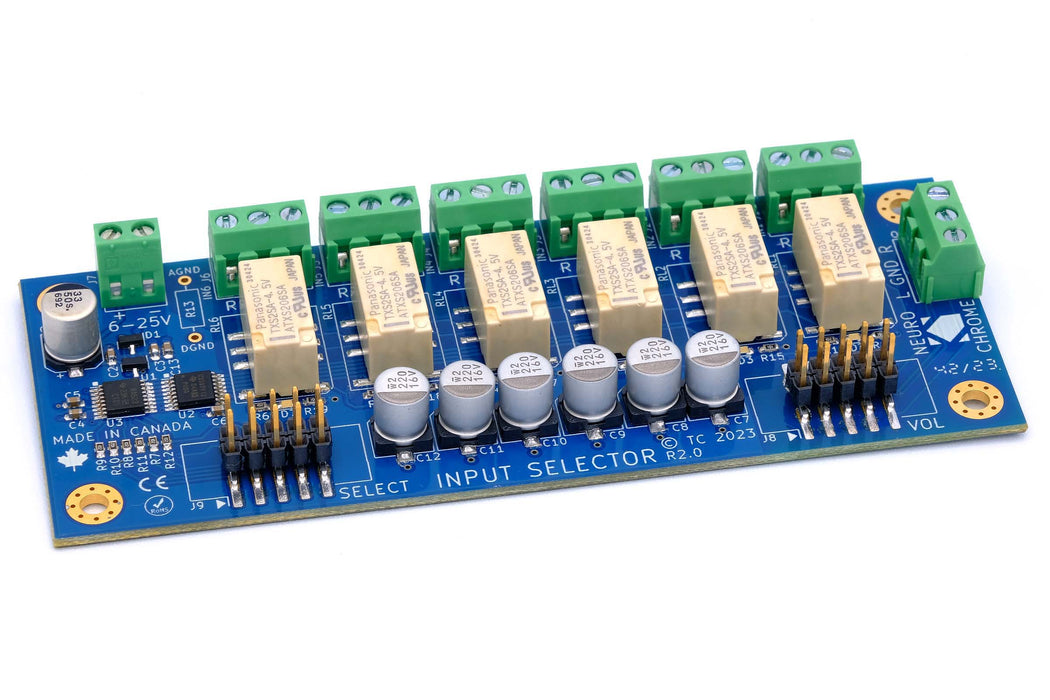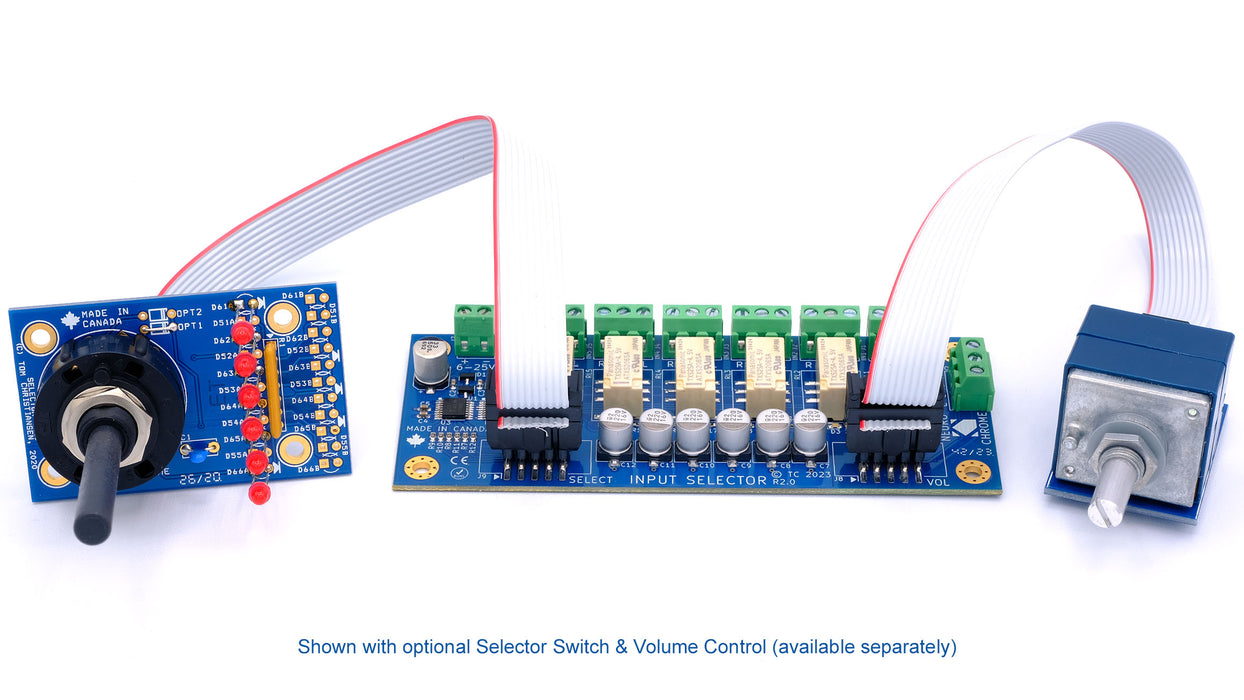-
The features of the Input Selector are listed below.
- Relay-based input selector with six stereo inputs.
- High channel separation and excellent off attenuation.
- On-board 5 V regulator powers the relays.
- Relay Saver technology reduces the power dissipated in the relay coils by 36 % once the relay has switched, thereby enhancing the reliability and longevity of the circuit.
- Gold plated relays, designed specifically for small-signal use.
- Connection to volume control by 10-pin, gold-plated connector.
- 3.3 – 5.0 V compatible logic control inputs with ESD protection for audio input selection.
- Gold plated PCB. Made in Canada. The circuit module arrives fully assembled and ready to go.
-
The specifications of the Input Selector are tabulated below.
| Parameter |
Value |
Notes |
| Number of Stereo Inputs |
6 |
|
| Power Supply Voltage |
6.0 – 25 V |
|
| Power Supply Current |
17 mA |
|
Input Impedance
|
10 kΩ
|
With recommended volume pot.
(Note 1)
|
Max. Output Impedance
|
2.5 kΩ
|
With recommended volume pot.
(Note 1)
|
| Channel Separation |
113 dB |
1 kHz, incl. volume control |
| Off Attenuation |
> 127 dB |
1 kHz, incl. volume control |
| Dimensions |
45 × 112 × 14 mm |
|
| Weight |
46 g
|
|
Note 1: The input impedance of a passive preamp is equal to the resistance of the volume pot. The maximum output impedance of such a preamp is equal to one quarter of the resistance of the volume pot.
-
The amplitude response and gain flatness of the input selector is shown below. As you would expect from a passive preamp, the gain is completely flat and slightly below unity due to the load of the volume pot on the signal source. The bandwidth of the Input Selector exceeds 200 kHz.


More importantly, the left-to-right channel separation is very high as shown below.

In addition to providing good separation between left and right channel, the Input Selector must also have good isolation between inputs. Otherwise the signal from an unselected source can leak through to the output. The measurement below shows the attenuation between an unselected channel and the selected channel, otherwise known as the off-attenuation. This attenuation is very high, which results in no bleed-through between signal sources.







